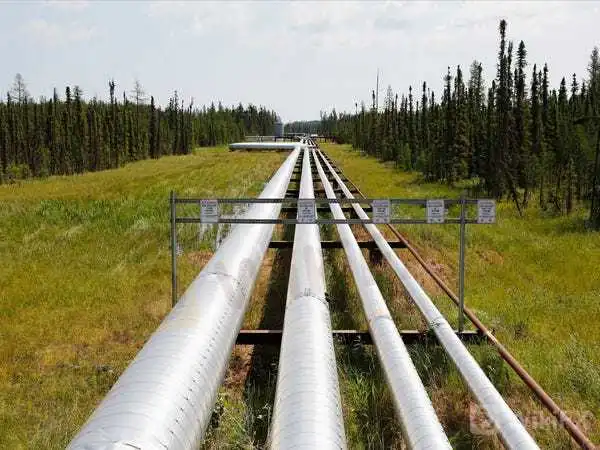The 3 winners and 3 losers when oil prices collapse - Business Insider
Abstract:In the wake of negative oil prices, companies with storage assets or pipelines come out on top and traders with long positions sink to the bottom.
For the first time in history, the price of US crude oil reached negative double-digits on Monday, falling to about minus $38 a barrel.“Fortunes were made and fortunes were lost,” said Tom Kloza, the head of energy analysis at Oil Price Information Service, a division of IHS Markit. Those who came out on top are storage and pipeline companies, and large oil traders, Kloza said. On the flip side, inexperienced retail traders who were stuck with oil futures that no one wanted likely lost millions, he said.Visit Business Insider's homepage for more stories.
The oil market meltdown on Monday reminds Tom Kloza of his grade school math class, when he had to face an imaginary number, the square root of negative 1. “I feel as though I'm living that fear and dread once again,” Kloza, the head of energy analysis at Oil Price Information Service, a division of IHS Markit, told Business Insider. “But they're not imaginary, however negative they may be.” Kloza is referring to the price of May futures of West Texas Intermediate (WTI) crude oil, which plunged into negative double-digits on Monday for the first time in history. By market close on Monday, WTI had settled at minus $37.63.On Wednesday morning, after May futures expired, WTI to be delivered in June was trading at about $15 a barrel, which is down more than 75% since the start of the year. Read more: The price of US crude oil just went negative for the first time. Here's what that really means and why it's not free to fill up your car.
The price meltdown sent tremors through the global energy economy, with some people and firms churning out massive profits and others suffering deep losses, he said.“Fortunes were made and fortunes were lost,” Kloza said.

“If you have pipeline space, it's kind of like having the first-class cabin reserved on a flight to the Superbowl,” Kloza said.
REUTERS/Todd Korol
The winners: Firms with pipelines and storageWTI crude turned negative on Monday, in the final trading hours for May futures contracts. Oil traders, who are not equipped to take physical deliveries, scrambled to sell the contracts to buyers who could, Kloza said.But with oil demand at historic lows, in the wake of a pandemic that has crippled the transportation sector, oil storage is nearing its limits.
Click here to subscribe to Power Line, Business Insider's weekly clean-energy newsletter.As a result, hardly any physical buyers wanted oil deliveries in May, so traders were paying them to take their futures contracts for fear of having to receive an oil delivery.If a trader had 1,000 barrels worth of May futures, they'd be paying someone as much as $38,000 to get rid of them at some points on Monday.That means anyone who has available storage comes out on top. Kloza said that large oil traders such as Glencore and Mercuria specialize in storage and can see these market dynamics coming and book storage well in advance.
Firms that have storage capacity, such as BlueKnight Energy Partners, are also winners, Kloza said. In what's called a carry play, companies store oil at today's price for as little as 50 cents a barrel and upsell it in a few week's time. “It's a nice tidy way to make a huge profit,” he said. Companies that own pipelines that move oil from Cushing, Oklahoma, where WTI is delivered, to Houston are also winners, Kloza said. “There was a period a week or so ago where it made no sense to move crude from Cushing to the coast because prices on the coast are cheaper,” he said. “That's not true anymore. So if you have pipeline space, it's kind of like having the first-class cabin reserved on a flight to the Superbowl.”

The price of contracts for near-term US crude oil fell to nearly minus $40 on Monday.
Markets Insider
The losers: Retail investors, oilfield service companiesTraders with long positions on Monday and Tuesday, who were forced to pay buyers to take their contracts, likely lost a lot of money, Kloza said.
These are typically retail investors that don't understand how to trade in a “super contango” market, which describes a situation in which future oil prices are much higher than those today. But the alternative could be worse for anyone who doesn't have access to storage in Cushing. “If I'm going to take delivery of oil, what am I going to do? Put it in a garbage bag or like a thousand garbage bags?” he joked. When oil prices plunge into the ground, it also “motivates large producers, whether they be public or private companies or whether they be sovereign nations, to cut production.”A coalition of nations known as OPEC Plus agreed to voluntary cuts on the order of nearly 10 million barrels per day earlier this month.
But with market-driven cuts fueled by the falling price of oil, Kloza said he thinks those cuts will be more like 17 million bpd in reality. Cuts on that scale will “hasten the rebalance,” he said, “but it will also be devastating for jobs in oil and shale” as producers shut-in wells and cancel contracts with the people who operate them. “This is such a painful, painful experience for anybody in crude oil production,” Kloza said. Several of the world's largest oil companies including Halliburton and Apache have already announced layoffs, and experts say more are coming. The energy consulting firm Rystad Energy says more than a million oilfield workers could lose their job.

Gas prices at a gas station in Pearl, Mississippi on March 31
Julio Cortez/Reuters
For gas station owners, it's more complicatedWhen the price of oil falls, so does the price of gasoline you buy at the pump. On Wednesday, the national average was down to just $1.80 a gallon, according to AAA.
At face value, that's good news for gas station owners, who set their own prices — because they could enjoy wider profit margins. “Gas stations right now, they have never seen the economics better, ever,” said Patrick De Haan, an analyst at GasBuddy who's been tracking the prices closely. “If this environment could stay consistent, you'd be seeing hundreds of gas stations open up.” But don't be mistaken, Kloza said: This is not a good thing. Road fuel consumption is down a third this month, according to Rystad. Plus, gas isn't where stations make their money. It's in sales of jerky, chips, and other in-store purchases that depend on foot traffic, which has all but evaporated.
Read more

Oil Prices Drop as OPEC+ Considers Raising Production
Oil prices fell sharply this week as traders worried that OPEC+ might decide to pump more oil into the market at its upcoming meeting.

50% Tariff Imposed on India: The Sectors That Will Be Hit the Hardest
Finally, the day (August 27, 2025) arrived that India did not want. The imposition of 50% tariff by the US administration on most products exported from India. As per the US, the tariff is largely due to India continuing to purchase Russian oil. The extra 25% duty was added over 25% imposed at the beginning of August 2025 as India refused to stop purchasing Russian crude and defence hardware. Check out the sectors that will be hit the hardest with this tariff increase.

GemForex | Crude Oil (WTI)
Crude Oil (WTI) - Rebound in the offing?

Oil inches higher as OPEC meetings continue
A stronger than expected payroll report last Friday pushed equity markets to another all-time high. The U.S. economy added 850,000 new jobs during June when the consensus expected 700,000. Whilst the headline number looks good, there’s plenty to be worried about under the hood, as the new jobs are mostly in those sectors of the economy that have reopened. For instance, the leisure and hospitality sectors added 343,000 new jobs, education around 269,000, and the retail sector 67,000. These add up to around 80% of the total; this is great at first glance but not in the long run since these sectors do not drive the productivity or wage growth required for sustainable expansion. In particular, the U.S. economy is 70% consumer driven, which emphasizes the importance of a healthy and wealthy labor market. With the country still 7 million jobs short of pre-pandemic levels and most of the recovery happening in low-paying and low-productivity sectors, there is still a long way to go before the
WikiFX Broker
Latest News
WikiEXPO Global Expert Interview Spyros Ierides:Asset management and investor resilience
Dukascopy Issues Fresh Warning on Fraudulent Clone Websites
Thinking of Trading with Darwinex? Read This First!
Top Reasons Why You Should Avoid Trading with B Investor
CySEC Restricts OctaFX Majority Owner’s Voting Rights Amid India Probe
Top 5 Forex Trading Risks Every Trader Must Handle Smartly
French Government Collapse Signals Rising Eurozone Debt Risk
ASIC Slashes 9,000 Pages of Guidance—What It Means for Forex and CFD Firms?
Weekly Scam Alert: Avoid These Brokers & Protect Your Money!
Forex Trading Scams in Malaysia: How Scammers Trap YOU!
Rate Calc

